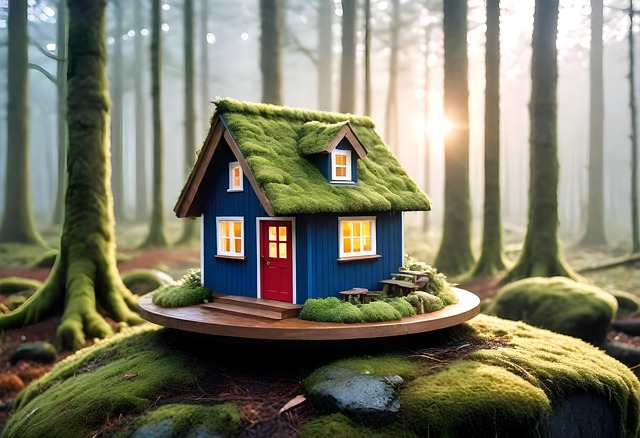The modern real estate trend leans towards compact, eco-friendly living spaces, led by the tiny home movement. Downsizing offers cost savings, energy efficiency, and a simpler lifestyle while reducing environmental impact. This appeal crosses demographics, attracting young professionals and retirees seeking affordable, eco-conscious living. Smaller homes prove size doesn't determine life quality, revolutionizing the sector with sustainable land use practices that preserve natural habitats and promote biodiversity.
“Discovering eco-friendly alternatives in real estate, tiny homes offer a compelling solution for sustainable living. This article explores how reimagining living spaces through compact, environmentally conscious design can significantly impact our planet. From the environmental benefits of the growing tiny home movement to innovative green building techniques and community-focused cooperative living, we delve into the multifaceted world of eco-dwellings. Join us as we uncover how smaller can indeed be greener.”
Reimagining Living Spaces: Tiny Homes as Eco-Friendly Solutions

In today’s world, there’s a growing trend towards rethinking traditional living spaces in favor of more compact and eco-friendly solutions. Tiny homes are at the forefront of this movement, offering a viable alternative to larger dwellings in the realm of Real Estate. By downsizing, individuals not only reduce their environmental footprint but also embrace a simpler lifestyle that can lead to significant cost savings. This shift is particularly appealing to those who appreciate sustainability and wish to minimize their impact on the planet.
These smaller abodes allow for creative use of space, incorporating essential amenities while promoting energy efficiency. From cleverly designed kitchens to multi-functional rooms, tiny homes demonstrate that living big isn’t defined by square footage alone. As a result, they’re gaining popularity among various demographics, from young professionals seeking affordable housing to retirees looking for downsized lifestyles that align with their eco-conscious values.
– Exploring the tiny home movement and its environmental benefits

The tiny home movement has emerged as a revolutionary trend in the real estate sector, offering a compelling alternative to the conventional focus on larger dwellings. This growing preference for compact living spaces is not just about downsizing; it’s an eco-friendly statement. By adopting tiny homes, individuals actively contribute to reducing their carbon footprint and minimizing the environmental impact associated with traditional housing.
The environmental benefits are significant. Smaller homes demand fewer resources for construction and maintenance, leading to lower energy consumption and reduced waste generation. This shift also encourages a more sustainable approach to land use, as less land is required to accommodate the same number of people, potentially preserving natural habitats and promoting biodiversity. The tiny home movement is, therefore, not just a lifestyle choice but a conscious decision to foster a greener planet.
– Advantages of compact living for sustainability

Compact living spaces offer a compelling solution for those seeking an eco-friendly alternative to larger dwellings in the real estate market. One of the primary advantages is their reduced environmental impact. Smaller homes require fewer resources for construction, have lower energy consumption, and generate less waste during both the building process and throughout their lifespan. This sustainability is further enhanced by the potential for more efficient use of water, space, and utilities, leading to a significant decrease in an individual’s carbon footprint.
Additionally, compact living promotes a simpler and often more connected lifestyle. With less square footage to maintain, residents can focus on quality over quantity, fostering a sense of minimalism that aligns with sustainable values. This shift towards smaller spaces can also encourage communities to develop more densely, reducing urban sprawl and preserving natural landscapes.






